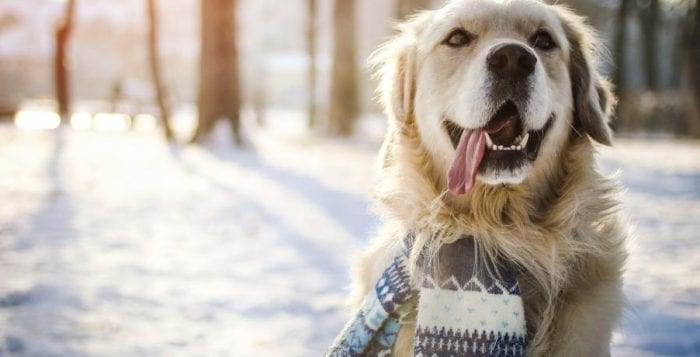Ask the Vet: New Year’s resolutions for pets
By Matthew Kearns, DVM
 I’ve always had trouble instituting New Year’s resolutions. Shortened daylight hours and colder weather make it sooooohhh difficult to get up early and exercise. I also instinctively look for starchy foods instead of fresh fruits and vegetables. Our pets face the same problems.
I’ve always had trouble instituting New Year’s resolutions. Shortened daylight hours and colder weather make it sooooohhh difficult to get up early and exercise. I also instinctively look for starchy foods instead of fresh fruits and vegetables. Our pets face the same problems.
Wild animals in colder climates slow down their metabolism and hibernate during winter months as temperatures drop and food becomes scarce. Domesticated dogs and cats are not so far removed from their wild ancestors that their own bodies react the same way. How do we avoid the inertia that inevitably sets in with winter weather?
The first thing is to keep an exercise routine in place. One of the few advantages of global warming is although temperatures drop, we don’t see as much snow and ice as in previous years. Sticking with daily walks helps keep their (and our) waistline at a manageable diameter. When the weather is not cooperating and our pets only go out long enough to do their business consider an indoor exercise routine. Rolling a ball to play fetch or using toys designed for cats to induce their stalking instincts are viable alternatives to playing outside.
The second phase of our New Year’s resolutions is to take a closer look at calorie intake during colder months. I always recommend evaluating how many treats, rawhides, table scraps, etc. our pets receive. During the winter months we may need to decrease or eliminate these extras.
I also see a lot of pets that gain weight the winter after they’ve been spayed or neutered and that can be difficult to take off again. Studies have shown that spaying and neutering dogs and cats does slow metabolism but, just because your pet was spayed or neutered does not mean that they will automatically become obese if we monitor their calorie intake and adjust properly.
If we are exercising and reducing calories but not seeing a reduction in weight, it’s time to talk to our veterinarian about underlying disease. Glandular disorders such as underactive thyroid in dogs can lead to obesity and, without thyroid supplementation, no amount of diet and exercise will help them. Older dogs and cats frequently suffer from obesity secondary to arthritis. These pets exercise less because they are unable to move like when they were younger.
Supplements and medications are available to help make them more comfortable and exercise more. Increased exercise and subsequent weight loss could reduce or eliminate medications (I recommend supplements lifelong).
I hope this information is helpful in keeping our pets from gaining too much during the winter months. Now, onto my New Year’s resolution … UGH!!!
Dr. Kearns practices veterinary medicine from his Port Jefferson office and is pictured with his son Matthew and his dog Jasmine. Have a question for the vet? Email it to [email protected] and see his answer in an upcoming column.







